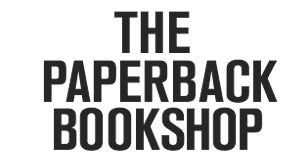|
|
Eco House Book
Stock informationGeneral Fields
Special Fields
DescriptionBuildings are the biggest polluters on the planet, responsible for a far greater proportion of the carbon dioxide emissions that get pumped into the atmosphere every year than cars, planes or factories. Just as we are urged to change our lifestyles to reduce our carbon footprint and consumption of water, there is a great deal we can do to convert our existing homes into greener, healthier places to live. Most homes, even those built relatively recently, are not decorated, designed, constructed or serviced with eco-friendliness in mind. But you don't have to start again from scratch to make a huge difference to the way your home impacts on the environment. From relatively small and economic changes to more dramatic overhauls, there has never been a better time to green your home. Home improvement has a wider remit these days than simply changing the way your home looks or functions. Environmental issues should be part of every decision you make on the home front - from selecting fabric for soft furnishings to designing and siting a home extension. Including tips, advice on material choices and design directions, "The Eco House Book" provides all the information you need to reduce your home's carbon footprint and in the process directly improve the quality of your life. Promotion infoThe complete guide to home improvement the environmentally friendly way. Details small, economic changes that can be made (including improving energy efficiency, water saving tips) to more dramatic overhauls (such as redesigning room use, extending your home). Terence Conran is the undisputed authority on design and his books, notably The Essential House Book and The Ultimate House Book, are international bestsellers. Includes more than 300 colour photographs. Author descriptionTerence Conran is one of the world's leading designers, furniture-makers, restaurateurs, retailers and founder of the Habitat group of stores, which revolutionized home furnishings in the 1960s. He is Chairman of Conran Holdings, the parent company of his retail and restaurant businesses, and Chairman of Conran & Partners, his architecture and design practice. Conran & Partners is responsible for a wide range of residential and commercial buildings around the world, including airport terminals in London and New York, the Roppongi Hills project in Tokyo, Butlers Wharf in London, housing for City Lofts across the UK, and hotels such as My Hotel in London, The Fitzwilliam in Dublin, Trieste in Vienna, The Park in Bangalore and Delhi, and Niki Club in Japan. There are Conran Shops in London, Paris, New York, Tokyo, Marunouchi, Nagoya and Fukuoka. Terence Conran also designs furniture for Content and Benchmark. In 1989 he founded the Design Museum, the first of its kind in the world, and he is the Provost of the Royal College of Art. Terence Conran's books include The Essential House Book, The Essential Garden Book (co-written with Dan Pearson), Easy Living, Small Spaces, Terence Conran on Design, Terence Conran on London, Alcazar to Zinc, Kitchens, The Ultimate House Book, Bathrooms, Storage, How to Live in Small Spaces, Design: Intelligence Made Visible (co-written with Stephen Bayley) and Outdoors (co-written with Diarmuid Gavin)all published by Conran Octopus. Table of contentsIntroduction - Eco Adit How to be aware of your carbon footprint. Audit your lifestyle to find out how much energy you consume to heat, light and power your home, how much water you use and how much waste you generate in order to identify areas of improvement. Small steps can make a huge difference and all it takes is the will to change a few bad habits. Chapter 1. Servicing Homes consume vast amounts of energy and water on a direct basis. Changes to your home's infrastructure are among the most effective energy- and water-saving measures you can take. Many of these changes are simple, cheap and immediately cost-effective. Covers lighting, heating and cooling, electricity and water. Chapter 2. Basic Fabric From basic repairs and renovation to complete decorative and design overhauls, this section covers all the various ways you improve the basic fabric of your home. Covers windows, airflow and ventilation, doors, floors, walls, furniture and furnishing and repairs and maintenance. Chapter 3. Design Design changes, whether or not they involve structural alteration, can go a long way towards greening your home. Includes advice on changing the layout, building in flexibility, making new openings, converting basements, converting lofts and extending your home. Chapter 4. Outdoor Space Includes advice on green roofs, productive gardening and eco-friendly habitats. Chapter 5. Maintenance Recycling in all its manifestations. Covers reducing waste, cleaning and best practice. Case Studies Acknowledgements |
